Other
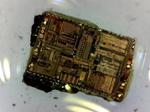
“Dallas Semiconductor, now owned by Maxim Integrated, is well known for making some excellent real-time clocks (RTCs). Take, for example, the DS1307: it’s simple, works with essentially any cheap 32,768 Hz watch crystal, is easily accessible over I2C …

“I got a Syma S107G IR controlled helicopter for my son a while ago. This tiny remote control helicopter is a rather amazing toy. Not only its movement is very stable, but the rotor speed, forward backward movements and turning …
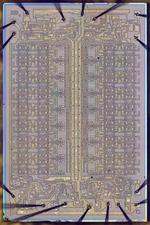
“Intel’s first product was not a processor, but a memory chip: the 31011 RAM chip, released in April 1969. This chip held just 64 bits of data (equivalent to 8 letters or 16 digits) and had the steep price …
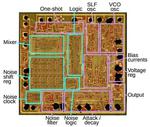
“Remember the old video game Space Invaders? Some of its sound effects were provided by a chip called the 76477 Complex Sound Generation chip. While the sound effects1 produced by this 1978 chip seem primitive today, it was used in …
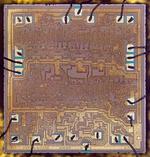
“The 74181 ALU (arithmetic/logic unit) chip powered many of the minicomputers of the 1970s: it provided fast 4-bit arithmetic and logic functions, and could be combined to handle larger words, making it a key part of many CPUs. But …

“The revolutionary Intel 8008 microprocessor is 45 years old today (March 13, 2017), so I figured it’s time for a blog post on reverse-engineering its internal circuits. One of the interesting things about old computers is how they implemented …

“A computer’s arithmetic-logic unit (ALU) is the heart of the processor, performing arithmetic and logic operations on data. If you’ve studied digital logic, you’ve probably learned how to combine simple binary adder circuits to build an ALU …

“What’s inside a TTL chip? To find out, I opened up a 74181 ALU chip, took high-resolution die photos, and reverse-engineered the chip.1 Inside I found several types of gates, implemented with interesting circuitry and unusual transistors. The …
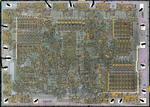
“Intel’s groundbreaking 8008 microprocessor was first produced 45 years ago.1 This chip, Intel’s first 8-bit microprocessor, is the ancestor of the x86 processor family that you may be using right now. I couldn’t find good die …

“In a hotel room in Texas, Clive Sinclair had a big problem. He wanted to sell a cheap scientific calculator that would grab the market from expensive calculators such as the popular HP-35. Hewlett-Packard had taken two years, 20 …
